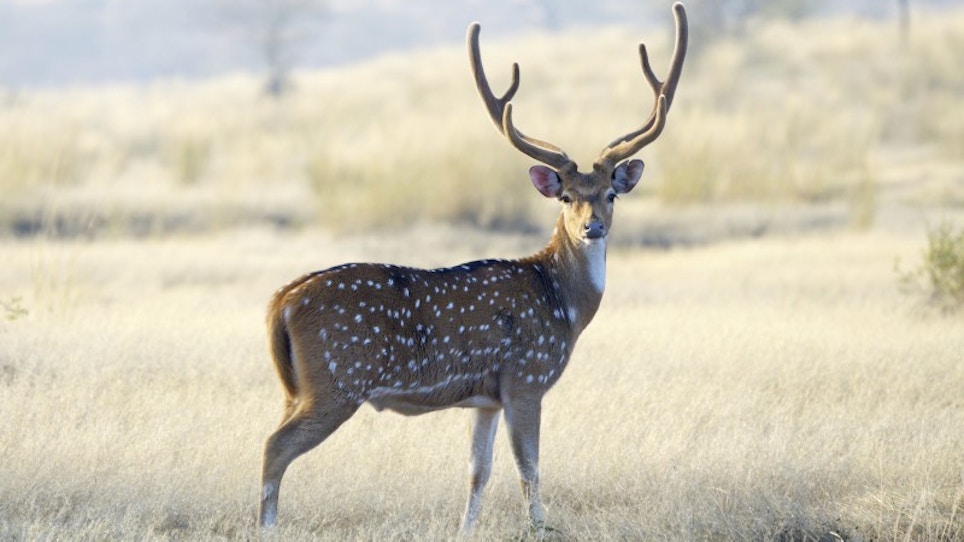If you’re like me, you dread seeing the end of deer season. Yes, we’re usually physically exhausted from the early morning rising, long waits on stand, and tiring still hunting sessions. But emotionally, it’s hard to see it come to an end.
If you want to extend your big game hunting, though, you don’t have to wait until next fall. If you have the funds, you can plan an adventure to Africa. Spring bear hunting in western states or Canada is also a great alternative that will start in the next few months. But another way to extend your big game hunting is to book a trip with an outfitter who offers hunts for exotics.
Several states offer exotics hunts, including Florida and Hawaii. But the most opportunities of all are found in Texas, where large, naturally-reproducing populations of these animals are found. The key to a good hunt is to book on either an unfenced ranch or one with enough acreage and thick cover that the fence doesn’t affect the movement of the quarry during the hunt. Both kinds can be sporting and challenging.
What you don’t want is a “canned” hunt in a small area where animals are stocked artificially. No true sportsman wants that. In Texas high fences on most large ranches are used for management purposes and to protect against poachers, not to make the hunting easier.
You can hunt exotics throughout the Lone Star State, from the Hill Country to the far western mountains near its border with New Mexico and south to the sprawling Brush Country. The major species sought include sika and fallow deer, axis, blackbuck antelope, and aoudad (barbary sheep).
The latter three are what I call “the big three” of Texas exotic hunting. These animals were transplanted from their native countries such as Africa and India and have thrived in the arid ranches found in Texas. They have been reproducing naturally for over half a century and provide challenging hunting. This is particularly true if you seek out an old, wary animal that has lived a long life and is about to decline physically.
If you still think “exotics” are bad, consider this. Brown trout and ringneck pheasants were also transplanted in the U.S. from different countries. So they are also “exotics”.
Axis deer are beautiful animals with elk-like racks and white spots on young and old alike. They weigh about the same as a very large whitetail buck, about 150-200 pounds.
Gene Fuchs, a famous Texas biologist and hunting guide, put me onto my first axis deer on the South Fork Ranch near Kerrville years ago when I went out with him and his son, Steve, also a wildlife biologist. The axis I finally harvested after a challenging hunt was an impressive trophy with 32-inch main beams that Gene estimated at five years old.
He explained that “some axis will be in hard antlers at any given time during the year and all axis bucks can breed any day of the year, regardless of whether they have antlers or not. Axis does cycle every 28-32 days if they’re not carrying a fawn. Once they give birth to a fawn, they can breed again within two months.”
Because of this great reproductive capacity, axis deer need to be harvested regularly so they don’t overpopulate the habitat and deplete the food supply.
Late winter through summer is the top period for hunting axis deer. Texas has tens of thousands of the animals. If you’re planning a vacation to Hawaii, the Dole pineapple company offers hunts on their vast land holdings, as do other large landowners in that state.
Another species that is fascinating to hunt is the blackbuck antelope. On one incredible hunt I looked over 20 blackbuck males before we stalked up on a trophy with beautiful 18-inch spiraling horns. We had seen larger animals, but the blackbuck is extremely wary and they slipped away without giving me a shot opportunity. Even though they only dress out at 60-75 pounds, blackbucks look very impressive with their long spiraling horns and striking hides with shades of back, white and tan.
The final member of what I call “the big three” exotics is the aoudad or barbary sheep. Hunting these animals is similar to going after bighorn or Dall sheep, but far less expensive. These can be hunted in the Hill Country, but the best adventures take place in the western part of Texas near towns such as Alpine, Midland, and Odessa.
That’s the area where I hunted for my first aoudad on a 150,000 acre unfenced ranch. It was truly wild hunting, every bit as challenging as seeking out an elk, bear, or moose. Finally, on the last day the guide and I located two trophy aoudads hanging out together. After a long belly-crawl, I harvested the largest one at 300 yards with my .30/06 right at sunset.
Chambers of commerce around the towns listed above as well as Kerrville in the Hill Country can provide lists of guides and information on hunting. Be sure to check with references before booking a hunt to make sure it’s exactly what you’re looking for.






